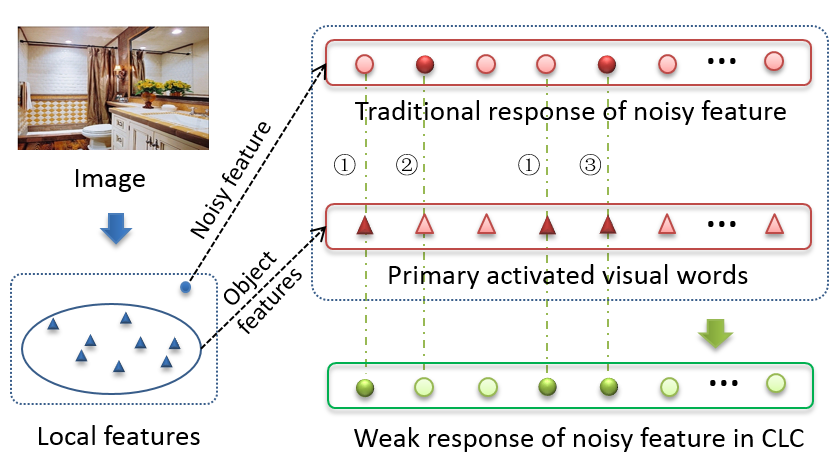Recently, a new paper “Collaborative Linear Coding for Robust Image Classification” from Prof. Wang is accepted to be published in International Journal of Computer Vision (IJCV).

Abstract:
How to generate robust image representations, when there is contamination from noisy pixels within the images, is critical for boosting the performance of image classification methods. However, such an important problem is not fully explored yet. In this paper, we propose a novel image representation learning method, i.e., collaborative linear coding (CLC), to alleviate the negative influence of noisy features in classifying images.
Specifically, CLC exploits the correlation among local features in the coding procedure, in order to suppress the interference of noisy features via weakening their responses on coding basis. CLC implicitly divides the extracted local features into different feature subsets, and such feature allocation is indicated by the introduced latent variables. Within each subset, the features are ensured to be highly correlated, and the produced codes for them are encouraged to activate on the identical basis.
Through incorporating such regularization in the coding model, the responses of noisy local features are dominated by the responses of informative features due to their rarity compared with the informative features. Thus the final image representation is more robust and distinctive for following classification, compared with the coding methods without considering such high order correlation.
Though CLC involves a set of complicated optimization problems, we investigate the special structure of the problems and then propose an efficient alternative optimization algorithm.
We verified the effectiveness and robustness of the proposed CLC on multiple image classification benchmark datasets, including Scene 15, Indoor 67, Flower 102, Pet 37, and PASCAL VOC 2011. Compared with the well established baseline LLC, CLC consistently enhances the classification accuracy, especially for the images containing more noises.
